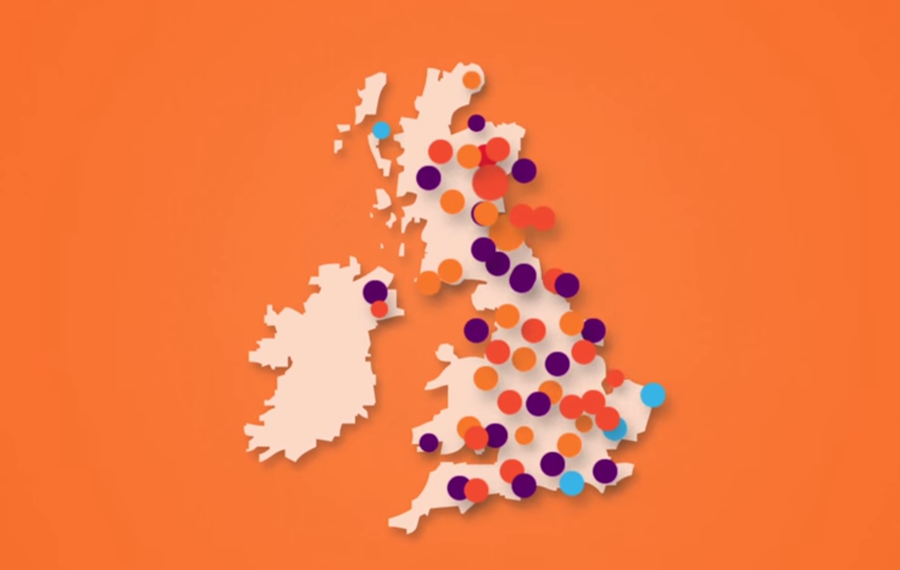Intelligenthq Series on Collaborative Finance Part 1 Intelligenthq
This is Part 1 of the IntelligentHQ Series on Collaborative Finance. Collaborative Finance is an umbrella term that assembles together various processes of money exchange happening right now that are revolutionising finance.
Recently a lot attention has been given trying to understand how technology is enabling a whole new phenomenon of person-to–person and crowd–driven funding, lending, currency and investment services. These services, according to various experts, promise to decentralize and democratize the access to finance, money and banking. The umbrella term that is being increasingly used to name these operations is collaborative finance.
What is Collaborative Finance
Collaborative finance is an exciting new concept that allows individuals to be funded without a financial institution such as a bank being involved in the traditional way. This new way to proceed to informal financial transactions is now possible due to the latest advances in and peer-to-peer on line platforms.
The term collaborative finance was first approached in the book “MacroWikinomics: rebooting business and the world”, written by by Don Tapscott and Anthony D. Williams. They write:
“A new movement is beginning, and it ‘s inspired by the public anger at a host of things, from the behavior of Wall Street and massive bank bonuses to the widening gap between the interest rate offered to savers and the rate charged to borrowers. It ‘s enabled now by the growth of mass collaboration via the Internet.”
This new idea was born from “collaborative consumption” which is also known as the sharing economy. The concept behind collaborative consumption is that people can share what they have to help other people out. One very simple example of this is car pooling where individuals share rides in cars to cut the costs for everyone that has to make the same journey. However, the advance of the internet has led to many applications of this idea being developed online, and one famous example of this is Airbnb where people rent out their spare rooms.
Characteristics of Collaborative Finance
Collaborative finance leads to the possibility of informal financial transactions to be able to take place. The possibilities for achieving this type of transaction have been vastly improved by the advent of social media websites and peer-to peer online platforms, according to site CollaborativeFinance.org. Such interactions are flexible and adaptable and are particularly appealing to those with lower incomes as the means of achieving collaborative finance means that it is often cheaper per transaction, making these options highly economic and attractive to many. Peer-to-peer decisions are made between borrowers and those borrowing money in terms of purpose of the loan, collateral needed to secure the loan, interest rates, maturity periods and debt rescheduling.
collaborative finance Intelligenthq
There are a number of benefits of collaborative finance that mean that it is appealing for low income households, states CollaborativeFinance.org. One such benefit is that there is no need for a license for suppliers, and another is that collateral is frequently not required. This is important because low income households may well not have collateral that is required to secure more traditional forms of financing, making it impossible for them to access funds. Instead of collateral there is peer pressure to repay, and those that borrow tend to be in the same community as the people that they are borrowing from. This localised approach means that community pressure is more achievable. It has been found that these types of approaches are good for achieving high repayment rates.
CollaborativeFinance.org explains that one form of collaborative finance is created through microfinance. This is excellent for very poor families as it offers them the opportunity to be able to gain access to good financial services that they would otherwise not be able to reach. This provides them the opportunity to save, get insurance policies, raise credit and deal with fund transfers. The goal is to assist poor people to get out of poverty. Traditionally this is a business area that has not been touched by banks since
“Either these entrepreneurs don’t have the capital or cash to back the loan. Or as the large banks argue, their credit needs are too small”.
Microfinance has benefited from social media websites, and organisations like Kiva provide micro lending through social approaches. There are also social lending sites, or peer-to-peer lending sites that remove the need for financial intermediaries.
Rebuilding Trust Through Collaborative Finance
Rachel Botsman (2014) also describes some of the benefits of collaborative finance. In particular, Botsman focuses on the trust and hate issues that exist between consumers and the banks, most common in Generation Y and younger. For example, Botsman argues that figures show that 71% would prefer to go to the dentist than listen to a bank, while 33% think that they do not need a bank at all.There is a general lack of understanding in society regarding what banks do and a move towards trusting other people more than large corporations. This may have been fostered by the economic downturn around the world, which it could be argued was created by these very same large corporations. All of this, writes Botsman, has driven people towards websites like Lending Club, Prosper and Society One. Indeed, social lending by 2025 is argued to be likely to have grown tremendously. Lending Club and Prosper issued $2.4 billion in loans in 2013, says Botsman, and growth in this area especially in the USA can be seen to be phenomenal.
All of this bodes exceptionally well for those that have been traditionally excluded from finance and kept in a resulting cycle of poverty. Maybe this has the power to really change the world.
Guide to Collaborative Finance (part2) – Peer to Peer Lending
Guide to Collaborative Finance (part3) – Social Saving

Maria Fonseca is the Editor and Infographic Artist for IntelligentHQ. She is also a thought leader writing about social innovation, sharing economy, social business, and the commons. Aside her work for IntelligentHQ, Maria Fonseca is a visual artist and filmmaker that has exhibited widely in international events such as Manifesta 5, Sao Paulo Biennial, Photo Espana, Moderna Museet in Stockholm, Joshibi University and many others. She concluded her PhD on essayistic filmmaking , taken at University of Westminster in London and is preparing her post doc that will explore the links between creativity and the sharing economy.






























